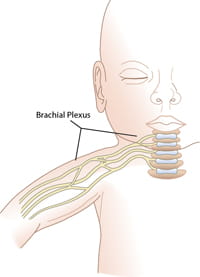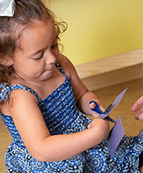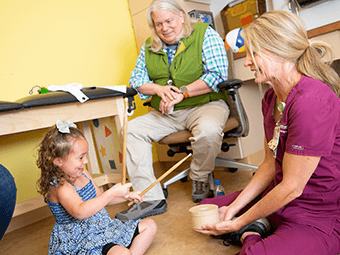 What Is Brachial Plexus?
What Is Brachial Plexus?
Five nerve roots from the spinal cord form the brachial plexus.
These fibers carry signals from the brain to the muscles. They let people move and feel their shoulders, arms, and fingers.
How Do Brachial Plexus Palsies Occur?
Brachial plexus palsies in infants most often occur from a tough or lengthy birth.
 They can also occur when a large baby must tilt their head to bring their shoulders through the birth canal. When this happens, they may stretch or disconnect some of these nerves.
They can also occur when a large baby must tilt their head to bring their shoulders through the birth canal. When this happens, they may stretch or disconnect some of these nerves.
When healing, the nerve may form internal scar tissue (neuroma).
This scar tissue may slow down or block signals from the spinal cord to the muscles. This can lead to problems with movement or sensation.
Nerve fibers can also become bruised, stretched, or even disconnected from force or pulling, such as from:
- Car or ATV accidents.
- Sports.
- Other activities.
This may also make the muscles those nerves send signals to get weaker or stop working altogether.
On average, nerves repair themselves at a rate of about 1 millimeter per day or 1 inch per month. This process can take many months.
Sometimes, if the nerve has become severed, it can't repair itself. In this case, the muscle will not work, no matter how much time passes.
What Determines the Severity and Outcomes of Brachial Plexus Palsies?
How severe a brachial plexus palsy is depends on:
- The number of nerves affected.
- The amount and type of damage to the nerve.
Although the brachial plexus comprises 5 nerve roots, for most babies, damage only occurs in the first 2 nerves. When this happens, the shoulder and/or elbow muscles these nerves reach may become weak or not work at all.
 This can lead to an issue called Erb's palsy. If all of the nerve roots become affected, then your child may find they can't move their arm at all.
This can lead to an issue called Erb's palsy. If all of the nerve roots become affected, then your child may find they can't move their arm at all.
When your child pulls or stretches more than one nerve, they may not heal. This may lead to an internal nerve scar (neuroma).
The muscle becomes weak, causing a loss of function. If your child doesn't regain most function within 9 months, surgery to repair their affected nerve or nerves may help.
It's often hard to predict whether the arm will have long-term decreased function. It's a good sign if the arm starts working again quickly. Most often, muscle strength comes back during the first year of your child's life.
We'll follow your child as they heal to help with the process and decide which treatment is best. Regular visits are helpful in ensuring that your child is recovering well.
Even if they don't recover complete function, most kids find they can use their arms and hands in daily life.
At the UPMC Children's Brachial Plexus Clinic, our team makes sure:
- To discuss all of these vital details as we follow your child.
- That parents and kids feel well-informed and at ease with their treatment, which is unique for each child we see.
Contact the Brachial Plexus Clinic at UPMC Children's
To make an appointment or learn more about our program, call us at 412-692-8650.









 What Is Brachial Plexus?
What Is Brachial Plexus? They can also occur when a large baby must tilt their head to bring their shoulders through the birth canal. When this happens, they may stretch or disconnect some of these nerves.
They can also occur when a large baby must tilt their head to bring their shoulders through the birth canal. When this happens, they may stretch or disconnect some of these nerves. This can lead to an issue called Erb's palsy. If all of the nerve roots become affected, then your child may find they can't move their arm at all.
This can lead to an issue called Erb's palsy. If all of the nerve roots become affected, then your child may find they can't move their arm at all.